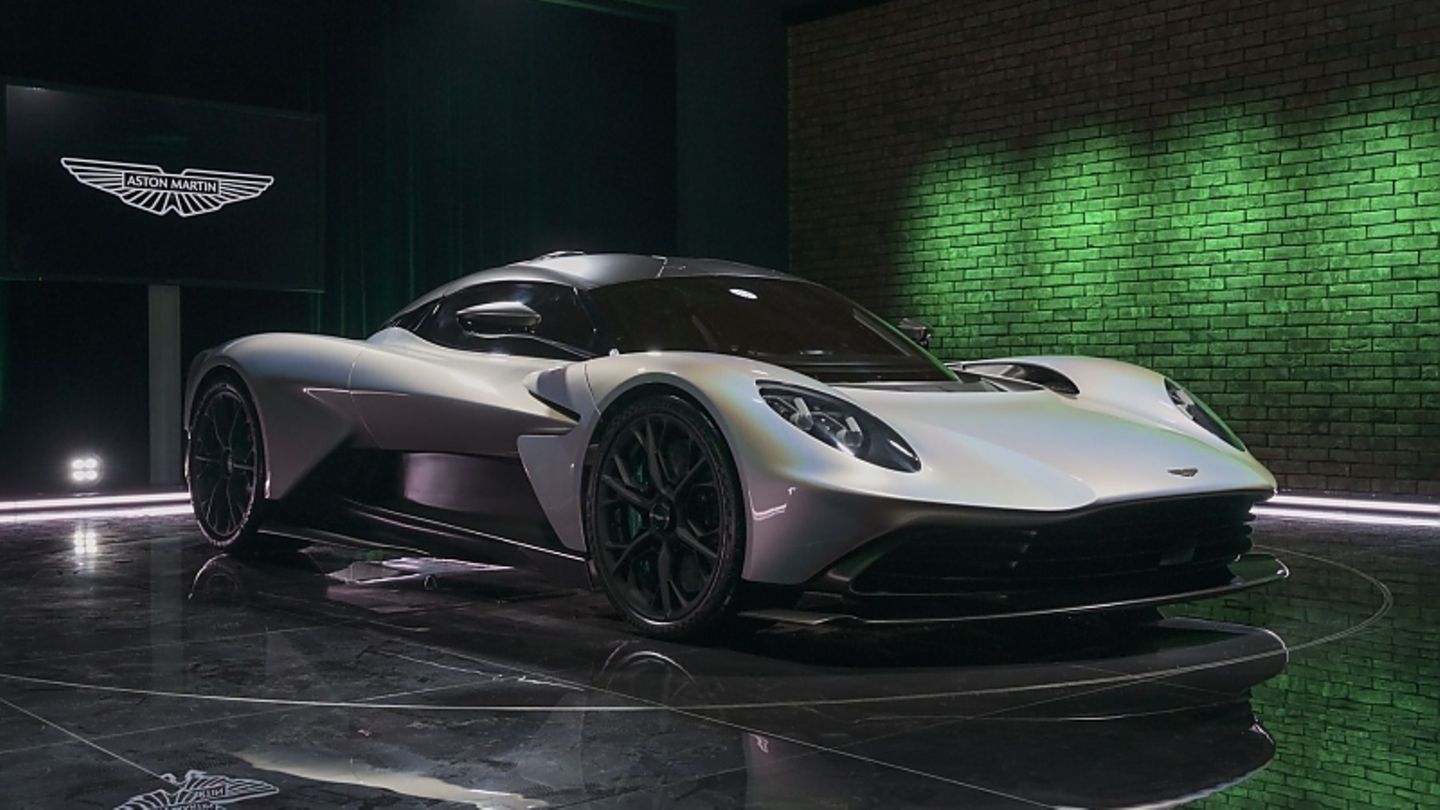Aston Martin sparks a fraternal dispute with the Valhalla. Because the PHEV hyper athlete should drive around the ears of the technology-related Mercedes AMG One. For this purpose, the British have hired Formula 1 champion Sebastian Vettel as a test driver.
Brexit is now a reality. Even if some Britons wish for the EU back, the urge for “splendid isolation” is part of the British collective consciousness. The UK likes to be special and prides itself on doing things differently. This attitude is also reflected in the Aston Martin Valhalla, which many suspect to be the sister model to the hybrid racer Mercedes AMG. But Corenn Lange vehemently contradicts that. “We only took over the engine block and the crankshaft from AMG,” explains the Aston Martin manager.
As if that weren’t enough differentiation, the woman with light blue eyes and a slight Munich accent throws another gauntlet into the British-Swabian Ring: “We want to beat the time of the Mercedes AMG One by five seconds on the Nordschleife.” That’s an announcement, after all, the star racer recently set a new record for production vehicles on the legendary Eifel roller coaster with 6:35.183 minutes. Rule Britannia.
The PS power of the plug-in hybrid hyper athlete gives substance to the project, but is not yet final, as development is not yet complete. The combination of combustion engine and two electric motors fires the Valhalla with more than 735 kW / 1,000 hp, balances the approximately 1,550 kg all-wheel drive vehicle from a standstill to 100 km/h in 2.5 seconds and drives the flounder on up to 350 km/h H. For comparison: the AMG One delivers 782 kW / 1,063 hp, completes the standard sprint in 2.9 seconds and the propulsion ends at 352 km/h.
The details of the Valhallla powertrain are exciting. The body of the combustion engine including the 180-degree crankshaft (flat-plane concept) comes from the AMG Black Series and generates around 533 kW / 800 hp. The British achieve this, among other things, by air-cooling the unit instead of water, as is the case with the AMG. But the “hot V”, in which the turbocharger is placed in the middle of the two cylinder banks, requires extremely efficient thermals and explains the need for the scoop. Compactness is key. That’s why the British use a specially manufactured Graziano eight-speed dual-clutch transmission.
Aston Martin also relies on a different supplier than Mercedes for the battery. The battery packs are located on the front and rear axles to ensure equal weight distribution, and the two electric motors together generate 212 hp. Purely electrically, the hyper athlete has a range of around 15 kilometers and can reach speeds of up to 130 km/h. The two electric motors perform other tasks, the rear one is responsible for reversing. The chassis consists of a push-rod front wheel suspension with internal springs and dampers and a multi-link axle at the rear with an electronically controlled spear differential.
The British gave the Valhalla a lot of Formula 1 genes from the cradle. None other than four-time world champion Sebastian Vettel and Nico Hülkenberg contribute their expertise to the set-up drives. According to reports, both Grand Prix drivers are very impressed by the Valhalla, but want to trim the vehicle for agility so that it comes as close as possible to a Formula 1 racer. Matching this are the radical aerodynamics, which inherit much of those of the Aston Martin Valkyrie, conceived by Formula 1 wind tunnel guru Adrian Newey, who gives the Red Bull cars wings. The diffuser and the venturi tunnel are borrowed from the father car. At a speed of 241 km/h, the Valhalla generates a downforce of 600 kilograms.
“Every shape has a function,” says Corenn Lange, explaining the concept. The sills, which are pulled inwards, are immediately reminiscent of the side boxes of Formula 1 racers. The almost reclining seating position, with the pedals slightly higher than the driver’s hips, fits into this concept. When we first tried the seat, we immediately felt at home in the Aston Martin flounder and thanks to the gullwing doors, it was easy to get in. The cockpit itself is reduced to match the athlete and is essentially limited to two screens.
The Valhalla’s carbon monocoque is said to weigh less than 120 kilograms, helping to push the dry weight down to less than 1,550 kilograms. According to the DIN standard, the Mercedes AMG One tips the scales at 1,695 kilograms. The first Aston Martin Valhalla will be delivered in 2024. The price for a ticket to secure the hyper athlete is 833,000 euros. Around two thirds of the contingent have already been sold.
Source: Stern
I am a 24-year-old writer and journalist who has been working in the news industry for the past two years. I write primarily about market news, so if you’re looking for insights into what’s going on in the stock market or economic indicators, you’ve come to the right place. I also dabble in writing articles on lifestyle trends and pop culture news.




